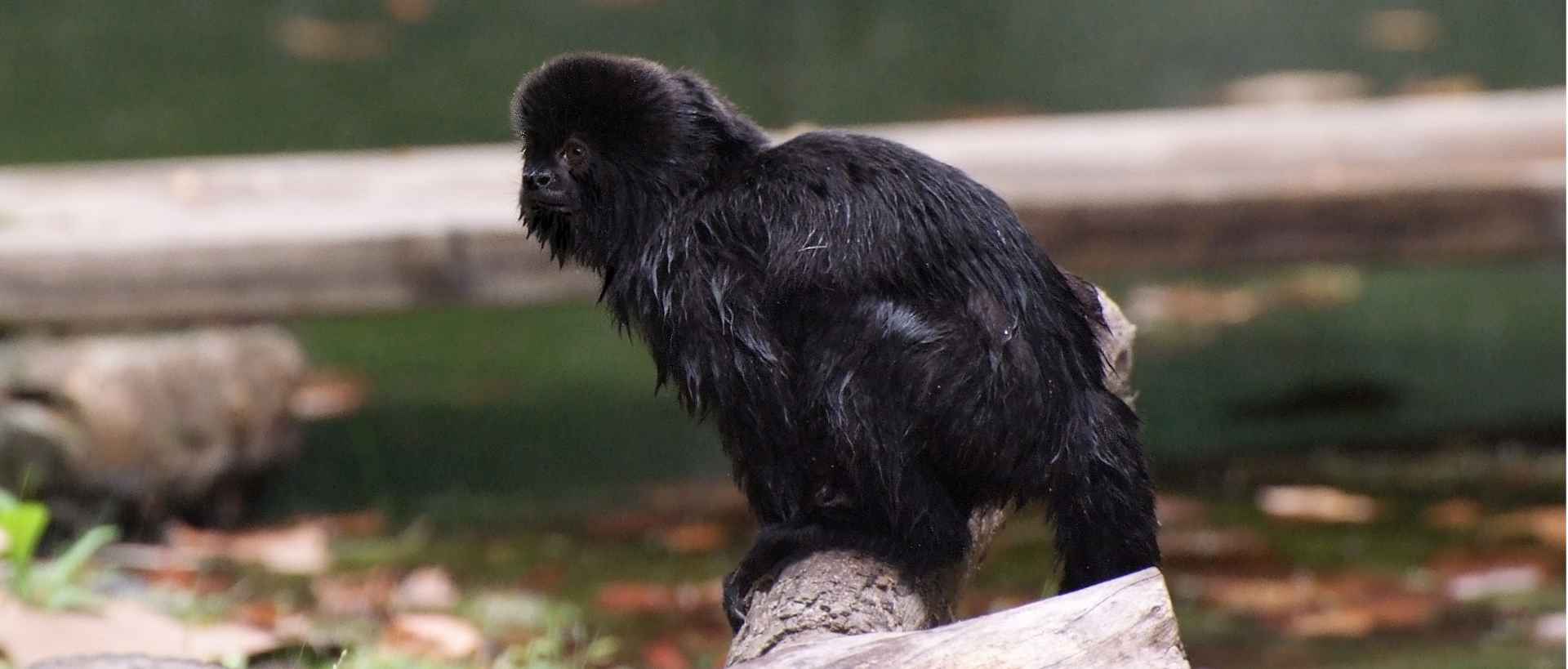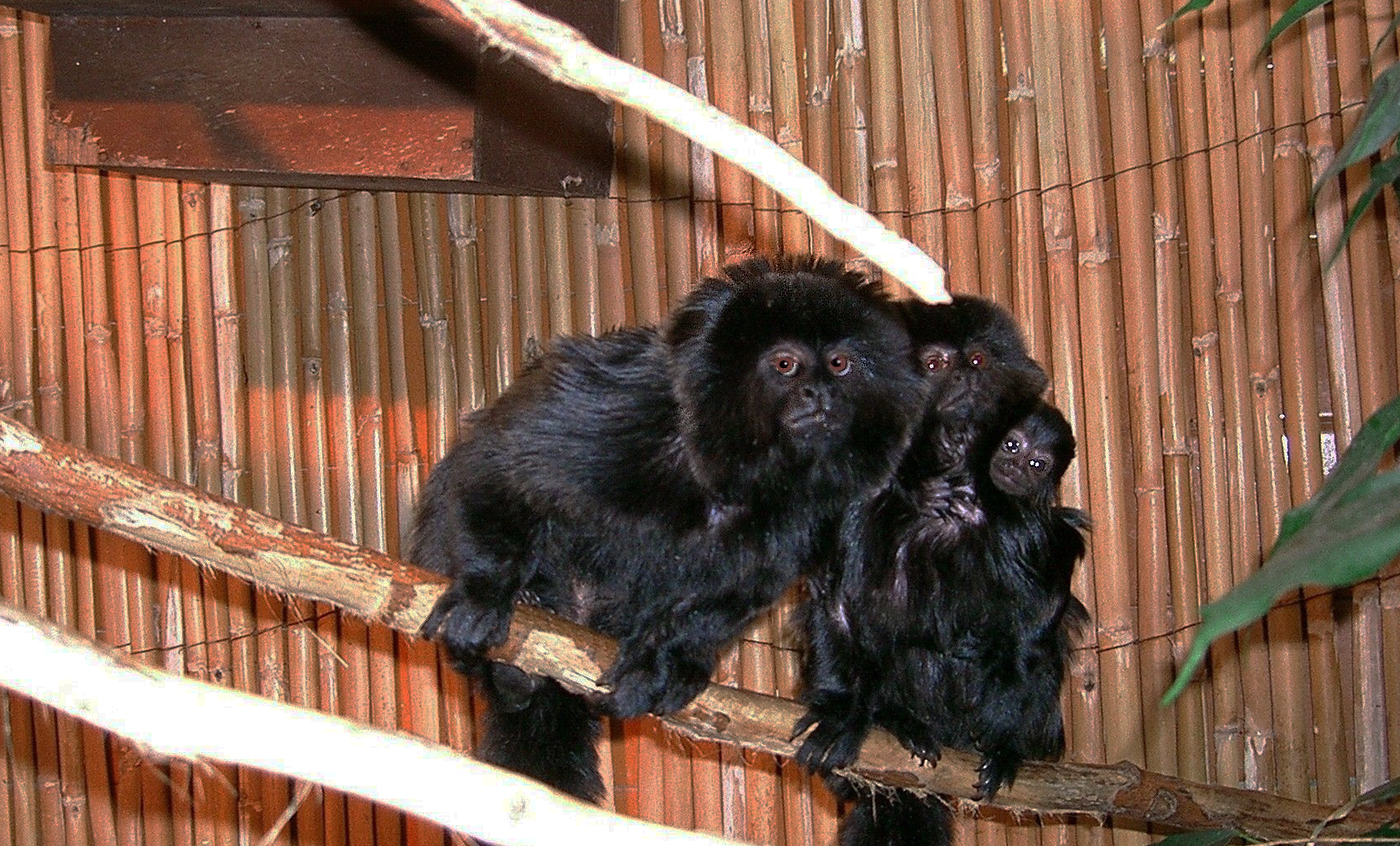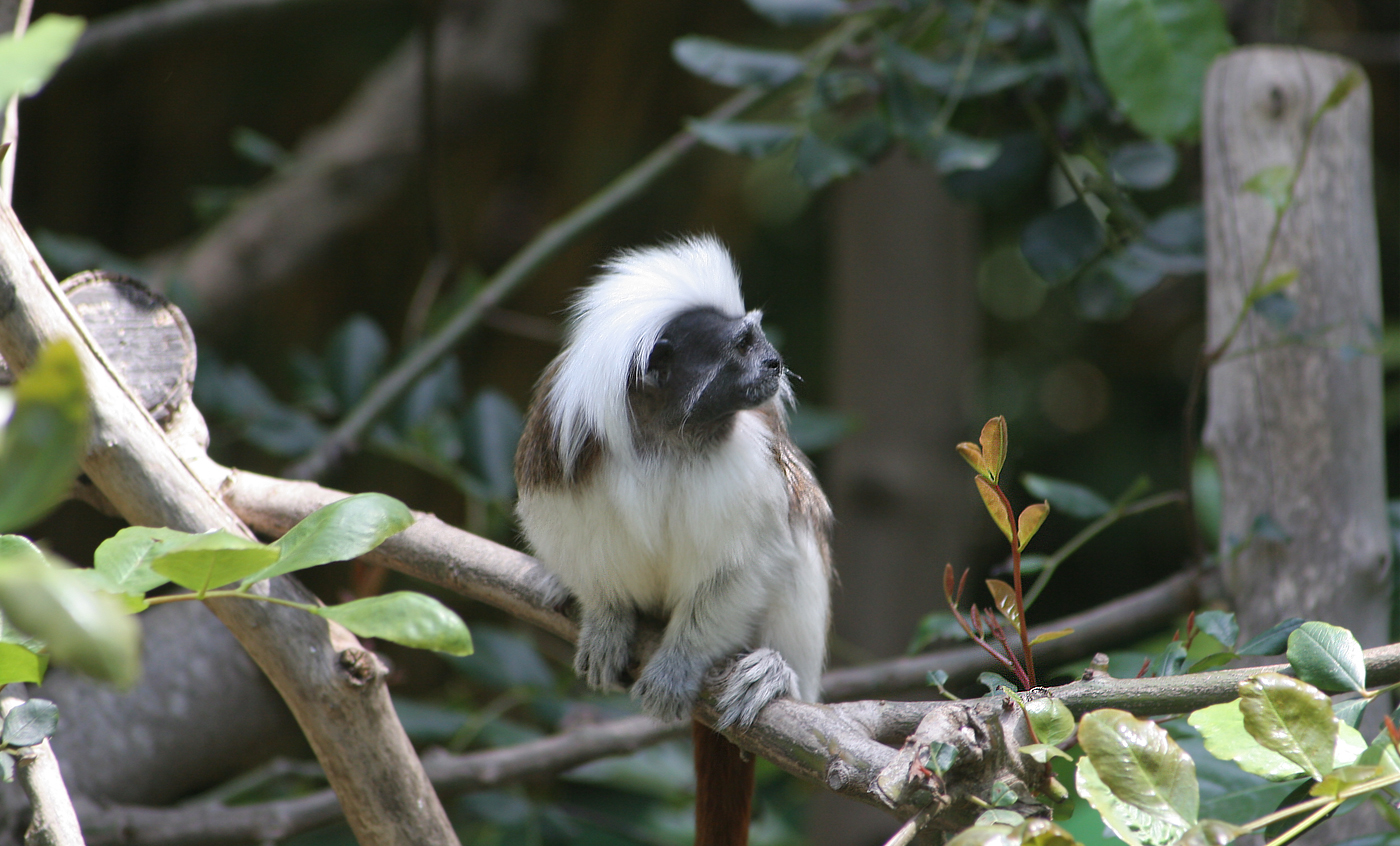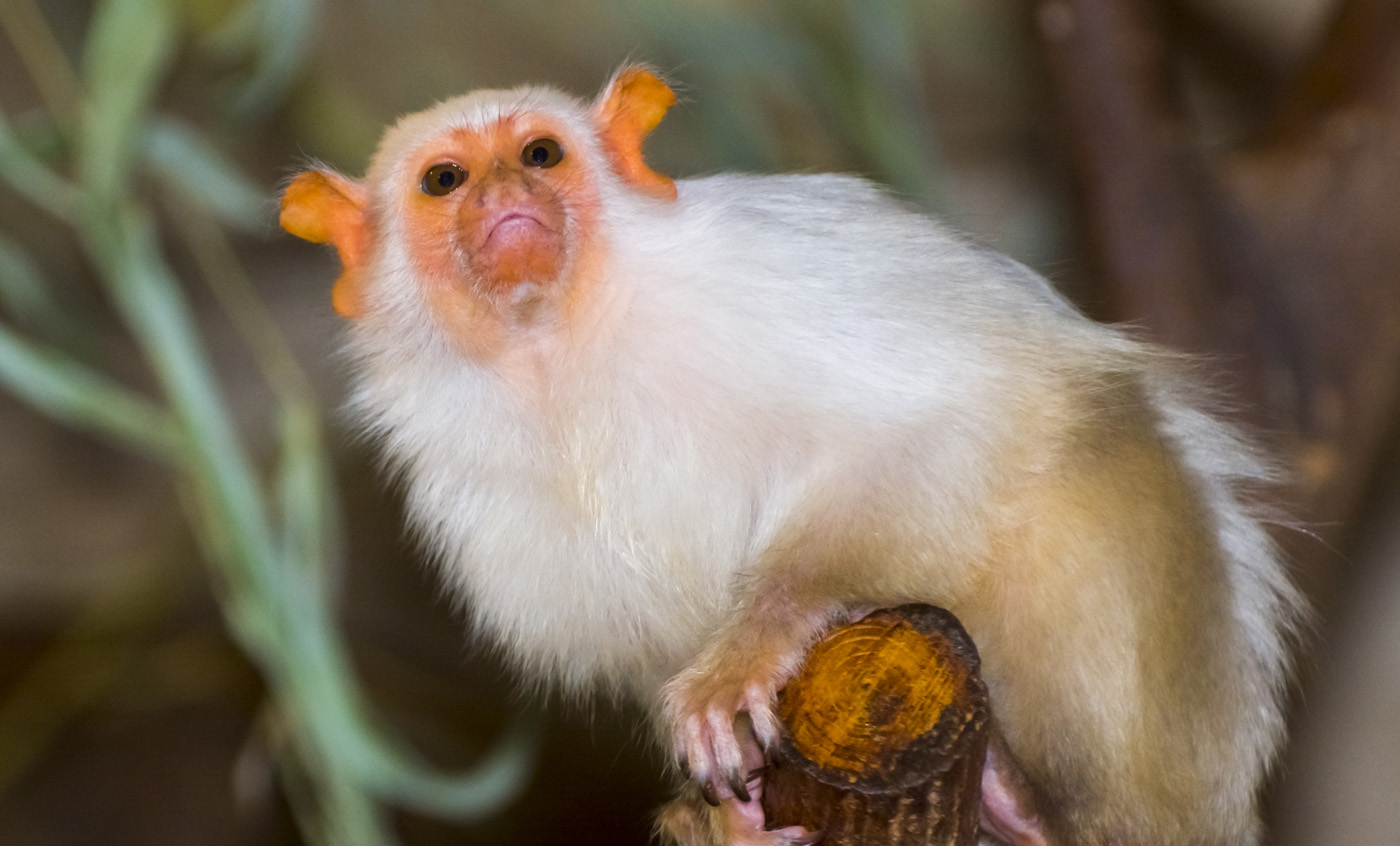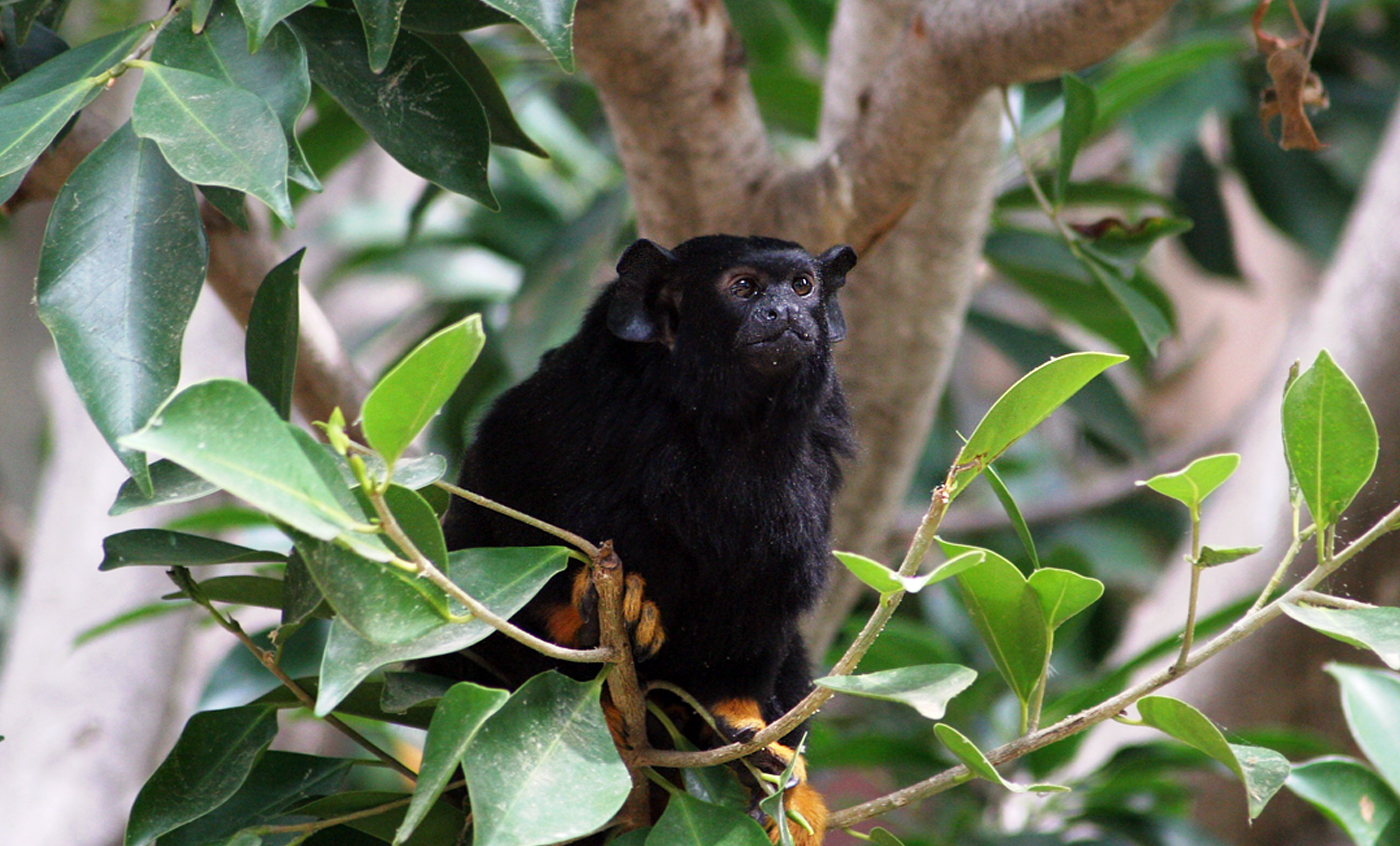Goeldi's monkey
Goeldi’s marmoset inhabits the non-flooding rainforests of western Brazil, northern Bolivia, southern Colombia and eastern Peru. Although it can sometimes be spotted on the ground, it is an arboreal animal able to jump up to 5 m among the trees.
Unlike most marmosets, who generally give birth to twins, this species gives birth to a single baby each time.
Breeding program
Natural habit
Western Brazil, northern Bolivia, southern Colombia and eastern Peru.

- Distribution / Resident
- Breeding
- Wintering
- Subspecies
Risk level
- Extint
- Extint in the wild
- Critically endangered
- In Danger
- Vulnerable
- Near threatened
- Minor concern
- Insufficient data
- Not evaluated
Taxonomy
Physical characteristics
Biology
Reproduction
Biology
The fur of this marmoset is black in all of its body, including the face, ears, tail, hands and feet, and has a longer haired mane of the same colour. It has claws in hands and foot, unless in its toes and thumbs, where it has a flat nail.
The Goeldi’s marmoset lives in bamboo forests and non-flooding plain rainforests, either primary and secondary, and it prefers areas with dense vegetation.
It feeds on fruit, nectar, insects, small vertebrates and a high percentage of its diet consists of fungus, which is uncommon for marmosets.
Unlike most marmosets, who generally give birth to twins, this species gives birth to a single baby each time. Babies grow faster than other callitrichids. They grab the mother’s belly for the first days, but after two weeks it is already carried on the back, generally by the father, who only returns the infant to its mother for breastfeeding. It can breed twice a year.
It lives in small family groups of five or six individuals, formed by a couple of adults and young animals. It is diurnal and, although it can sometimes be spotted on the ground, it is an arboreal animal able to jump up to 5 m among the trees. However, it frequently forages among dense vegetation in the lower parts of the rainforest.
Nowadays it is endangered due to the deforestation of its habitat, caused by the increase of crops and pastures, as well as the construction of big infrastructures. Therefore, populations are small and isolated from each other.
The Zoo of Barcelona takes part in the EEP of this species.




